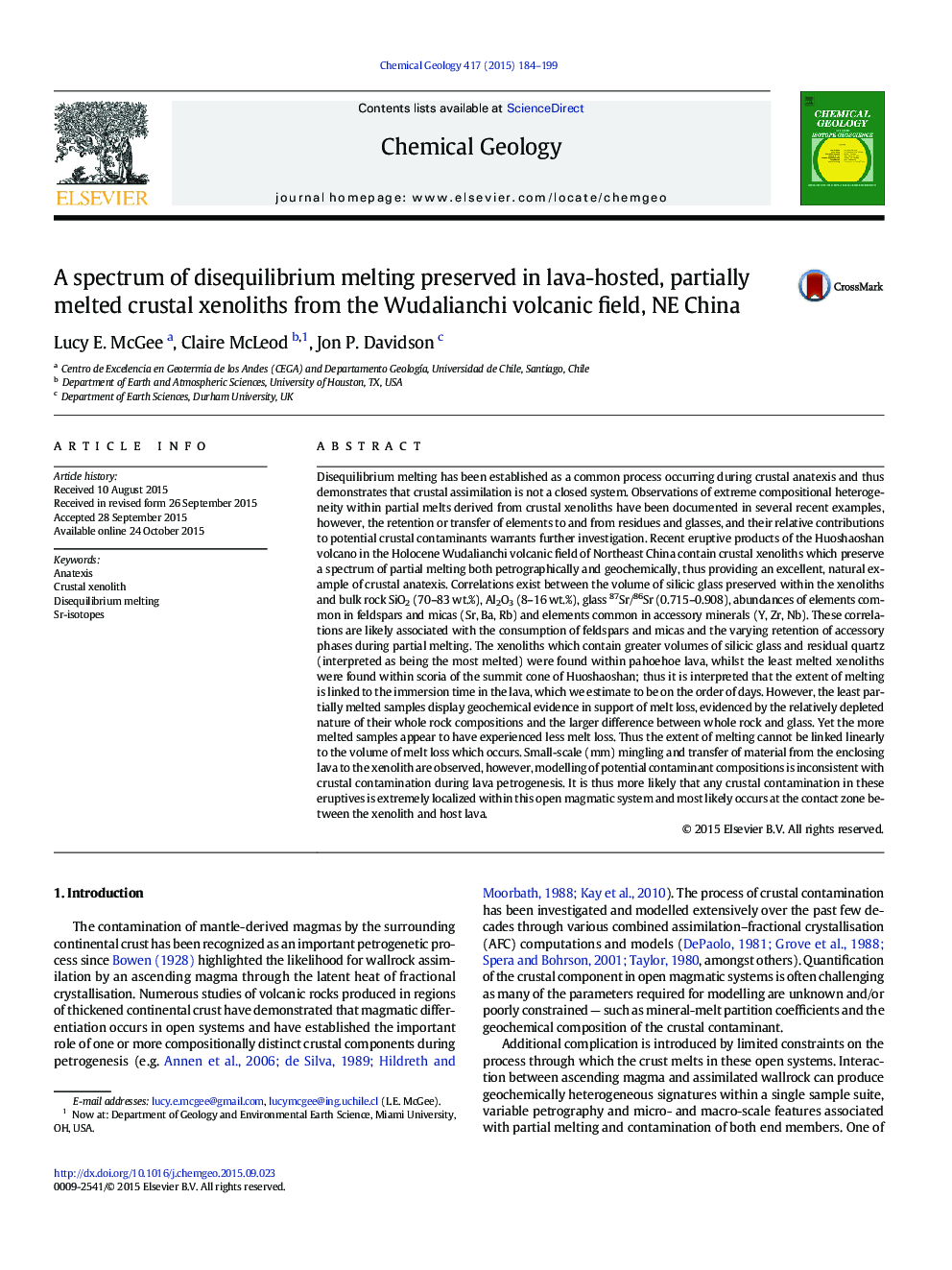| کد مقاله | کد نشریه | سال انتشار | مقاله انگلیسی | نسخه تمام متن |
|---|---|---|---|---|
| 6436260 | 1637557 | 2015 | 16 صفحه PDF | دانلود رایگان |

• Partially melted crustal xenoliths in Cenozoic basalts from China display highly variable major and trace element chemistry.
• Sr isotopic compositions of xenolith glass range from 0.715 to 0.908, showing extreme disequilibrium melting during anatexis.
• Bulk rock and glass chemistry record the breakdown of rock-forming minerals, which can be correlated with extent of melting.
• Anatectic melt(s) have been lost from the system; the extent of this does not correlate with the inferred amount of melting.
Disequilibrium melting has been established as a common process occurring during crustal anatexis and thus demonstrates that crustal assimilation is not a closed system. Observations of extreme compositional heterogeneity within partial melts derived from crustal xenoliths have been documented in several recent examples, however, the retention or transfer of elements to and from residues and glasses, and their relative contributions to potential crustal contaminants warrants further investigation. Recent eruptive products of the Huoshaoshan volcano in the Holocene Wudalianchi volcanic field of Northeast China contain crustal xenoliths which preserve a spectrum of partial melting both petrographically and geochemically, thus providing an excellent, natural example of crustal anatexis. Correlations exist between the volume of silicic glass preserved within the xenoliths and bulk rock SiO2 (70–83 wt.%), Al2O3 (8–16 wt.%), glass 87Sr/86Sr (0.715–0.908), abundances of elements common in feldspars and micas (Sr, Ba, Rb) and elements common in accessory minerals (Y, Zr, Nb). These correlations are likely associated with the consumption of feldspars and micas and the varying retention of accessory phases during partial melting. The xenoliths which contain greater volumes of silicic glass and residual quartz (interpreted as being the most melted) were found within pahoehoe lava, whilst the least melted xenoliths were found within scoria of the summit cone of Huoshaoshan; thus it is interpreted that the extent of melting is linked to the immersion time in the lava, which we estimate to be on the order of days. However, the least partially melted samples display geochemical evidence in support of melt loss, evidenced by the relatively depleted nature of their whole rock compositions and the larger difference between whole rock and glass. Yet the more melted samples appear to have experienced less melt loss. Thus the extent of melting cannot be linked linearly to the volume of melt loss which occurs. Small-scale (mm) mingling and transfer of material from the enclosing lava to the xenolith are observed, however, modelling of potential contaminant compositions is inconsistent with crustal contamination during lava petrogenesis. It is thus more likely that any crustal contamination in these eruptives is extremely localized within this open magmatic system and most likely occurs at the contact zone between the xenolith and host lava.
Journal: Chemical Geology - Volume 417, 6 December 2015, Pages 184–199